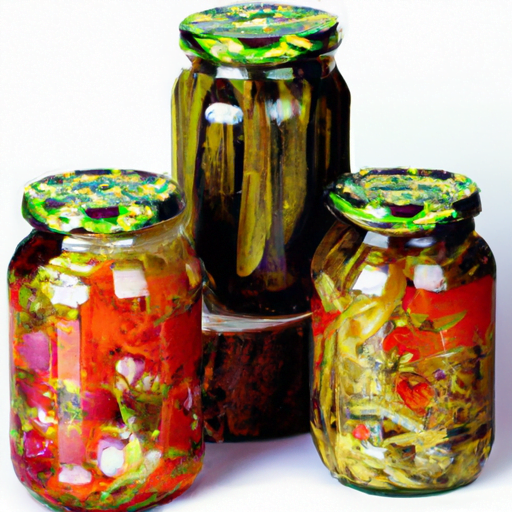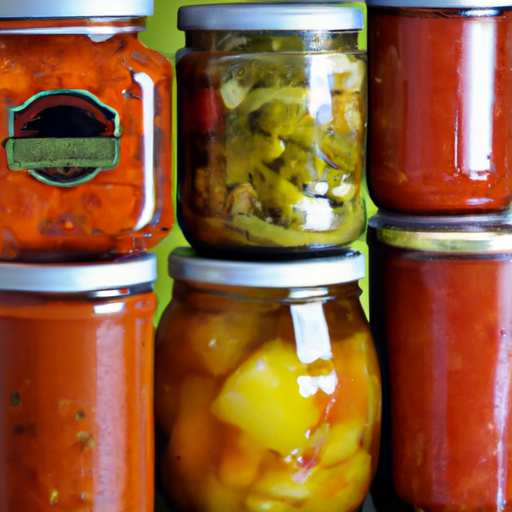Have you ever thought about preserving vegetables for long-term storage? Maybe you’re interested in off-grid living or just want to have a sustainable food source. No matter the reason, learning how to store vegetables for years can be a valuable skill. In this article, we’ll discuss different methods and techniques that will help you preserve your vegetables for an extended period of time. So, if you’re curious to know more about this topic, keep on reading!
Preserving vegetables for years can be a great way to ensure a steady supply of nutritious food, especially if you’re living off the grid or in a remote area. There are various methods you can use to achieve this, such as canning, freezing, dehydrating, and root cellaring. Each method has its pros and cons, and we’ll dive into each one in more detail in the article. By the end, you’ll have a better understanding of which method suits your needs and resources.
Canning is one of the most popular methods for long-term vegetable storage. It involves sealing the vegetables in sterilized jars with either a water bath or pressure canner. Freezing, on the other hand, is a quick and easy method that works well for certain vegetables. Dehydrating is a great option if you have limited storage space, as it reduces the moisture content and makes the vegetables less susceptible to spoilage. Lastly, root cellaring is a traditional method where vegetables are stored in a cool, dark, and humid environment, such as a basement or underground cellar.
Each preservation method has its own set of steps and considerations, but don’t worry, we’ll break it down for you in the article. By the end, you’ll have a solid understanding of different long-term storage methods and be equipped with the knowledge to preserve your vegetables for years to come. So, if you’re interested in preserving your own vegetables and securing a sustainable food source, keep reading to learn more!

Preserving Vegetables: Long-Term Storage Methods
Off-grid living has become increasingly popular for those seeking self-sufficiency and environmental sustainability. One important aspect of this lifestyle is the ability to store vegetables for an extended period, allowing you to have access to fresh produce even during non-growing seasons. In this article, we will explore various long-term storage methods that will help you preserve your vegetables for years to come.
Canning Vegetables
Canning vegetables is a traditional method that has been used for centuries to preserve food. It involves sealing vegetables in glass jars and then processing them in boiling water or a pressure canner. The high temperature kills bacteria and other microorganisms, preventing spoilage and maintaining the freshness of the vegetables. It is important to properly follow canning guidelines to ensure the safety and longevity of your preserved vegetables.
Freezing Vegetables
Freezing vegetables is another commonly used method to store produce for an extended period. The process involves blanching the vegetables in boiling water for a short time to halt the enzymatic activity that causes them to spoil. After blanching, the vegetables are cooled and then packed in airtight containers or freezer bags. Freezing vegetables helps to retain their nutrients and flavor, allowing you to enjoy them even after months in the freezer.
Dehydrating Vegetables
Dehydrating vegetables is a method that removes all the moisture from the produce, inhibiting the growth of bacteria, yeast, and mold. This can be done through various means, such as using a food dehydrator, an oven, or even air-drying. Once dehydrated, the vegetables can be stored in airtight containers, such as glass jars or vacuum-sealed bags, for a long time. Dehydrated vegetables are lightweight, making them ideal for backpacking and camping trips.
Fermenting Vegetables
Fermenting vegetables is a great way to both preserve and enhance their flavor. This method involves the natural process of lacto-fermentation, where the sugars in the vegetables are converted into lactic acid by beneficial bacteria. The vegetables are placed in a solution of water and salt, creating an anaerobic environment that promotes the growth of these bacteria. Fermented vegetables can be stored in a cool, dark place for months or even years, and they are a great addition to salads, sandwiches, and other dishes.
Pickling Vegetables
Pickling is a time-honored preservation method that has been used for centuries. It involves submerging vegetables in a brine solution made of vinegar, water, salt, and spices. This acidic environment prevents the growth of bacteria and extends the shelf life of the vegetables. Pickled vegetables can be stored in jars in a cool, dark place, and they make a delicious addition to sandwiches, burgers, and salads.
Root Cellaring
Root cellaring is a method of storing vegetables in a cool, underground space. This traditional storage method relies on the natural insulation provided by the soil, maintaining a constant temperature and humidity level that is optimal for the preservation of vegetables. Root cellars typically have shelves or bins to store the produce, and they can be made from different materials, including concrete, wood, or even buried shipping containers. Proper ventilation and monitoring of the temperature and humidity are essential to the success of root cellaring.
Cold Storage
Cold storage refers to keeping vegetables at a low temperature, usually just above freezing, to prolong their shelf life. This can be achieved through the use of a walk-in cooler, a refrigerator, or even an insulated shed with cooling equipment. Cold storage helps to slow down the natural ripening and decay processes in vegetables, allowing you to enjoy them for a longer period. However, it is important to regularly check the temperature and humidity levels to ensure the vegetables are properly stored.
Vacuum Sealing
Vacuum sealing is a method that removes air from the packaging, creating a vacuum seal that prevents the growth of bacteria and other microorganisms. This method is commonly used in combination with other storage methods, such as freezing or dehydrating. Vacuum-sealed bags or containers can be used to store vegetables for an extended period, maintaining their freshness and quality.
Salting Vegetables
Salting vegetables is an ancient preservation method that involves coating the produce with salt to draw out moisture and inhibit bacterial growth. The salt acts as a natural preservative, preventing spoilage and allowing the vegetables to be stored for a long time. Salted vegetables can be rinsed before use to reduce the saltiness, and they can be used in various dishes, such as stews, soups, and casseroles.
Conclusion
Preserving vegetables for long-term storage is an essential skill for off-grid living or anyone seeking self-sufficiency. Whether you choose to can, freeze, dehydrate, ferment, pickle, root cellar, use cold storage, vacuum seal, salt, or combine multiple methods, the key is to find the method that suits your needs and preferences best. By preserving your vegetables, you can enjoy fresh produce all year round and reduce your reliance on store-bought produce. So start experimenting with these long-term storage methods and savor the flavors of your bountiful harvest for years to come.





